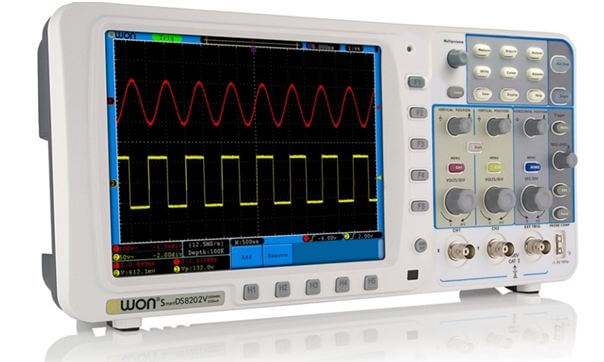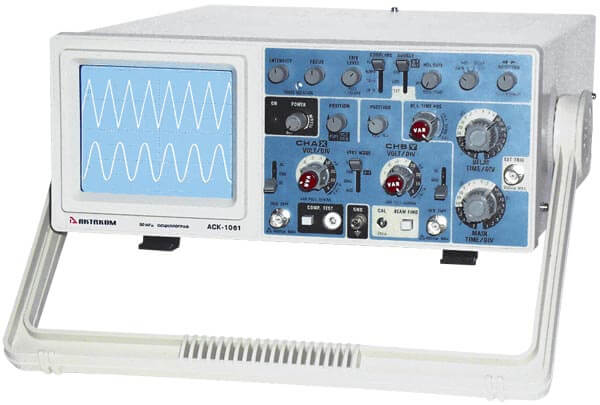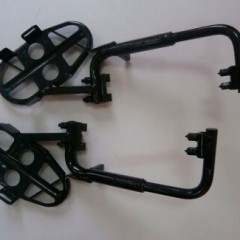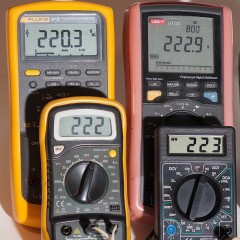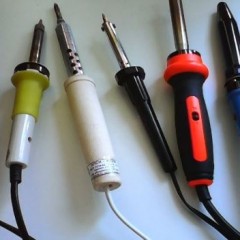Oscilloscope Masters Tips
Parameter Overview
Bandwidth and sample rate
The choice of device should also depend on its characteristics. So, measuring variable signals with the device, one should not forget that they have a certain maximum frequency and if the indicators are higher, then the accuracy of the measurements will deteriorate. This sets the bandwidth. Such a band should be 5 times higher than the frequency of the studied signal.
How to choose the right oscilloscope? If the bandwidth is insufficient, then the accuracy of the measurements will be distorted. If you choose a device for simple work with sound frequency amplifiers and with digital circuits, then 25 MHz will be enough. For professional research and for radio frequency circuits, it is necessary to choose a device with a value of 100-200 MHz. The choice of device depends on the bandwidth: the price will be higher, the higher the value of the upper band.
As for sampling, it depends on it at what speed the oscilloscope will process the input signal. And the quality of the image that will be displayed on the screen will depend on its frequency. The higher the frequency, the wider the bandwidth and, accordingly, the best resolution of single signals. Indeed, with a larger number of processed input points, the image will be more accurate. When measuring transient and single processes, this is considered very important.
Screen updates are not associated with the sampling rate. Before choosing an oscilloscope, you must remember that its cost depends on this frequency: the higher it is, the better the picture, respectively, and the higher the cost of the device. Device manufacturers can specify this indicator only for a single channel or the sampling frequency of the combined channels. The sampling value will be lower if a large number of channels are involved.
Type of food
The choice of device should also depend on the conditions of its use. For example, if you need to work with him on the road or in different rooms, then he must work on battery power. There are models that can work on battery power for up to eight hours. An oscilloscope that can operate on an electrical network is used in workshops, classrooms, or laboratories.
Number of channels
The number of independent signals displayed on the screen depends on how many channels exist in the device. Such an opportunity as observing several charts at the same time makes it easy to analyze and compare them. Two or four channels are enough for operation and analysis of simple equipment.
Types of devices
Before you finally choose an oscilloscope, you need to know what types it is divided into. According to the principle of signal reflection, the oscilloscope is divided into digital and analog.
Digital
With its help, static and mathematical processing of the data obtained as a result of taking readings is carried out. Also, if you select a digital oscilloscope, it is possible to detect impulse noise and save up to 10,000 waveforms in the device memory. The results are displayed on the LCD.
The settings are selected automatically, since the device has the functions of calibration and diagnostics. The errors in the product are minimal, due to which the data is obtained in high quality. Such an oscilloscope is indispensable if necessary to obtain an accurate diagnosis of equipment or a car.
Analogue
This is the simplest design. It includes a cathode ray tube that responds to electrostatic abnormalities. The readings are taken in real time, so that when the processor processes the signal, distortion is impossible.
Choosing an analog oscilloscope means getting reliable and trouble-free operation, as the image on the display does not lag behind the passing indicators. They also differ in low price and good maintainability. But before choosing this option, you should also remember about its shortcomings: when learning high-frequency signals, the screen may blink, there are insignificant possibilities for signal processing and relative to the measurement range. Such a device is widely used in service workshops of radio and television equipment. Because of this, he was also called the service oscilloscope.
We also recommend watching a video in which expert advice on choosing an oscilloscope is provided, as well as an independent rating of the top 10 models:
That is all we wanted to tell you about how to choose an oscilloscope for home and work. We hope the tips we provided were helpful to you!
We also recommend reading:


